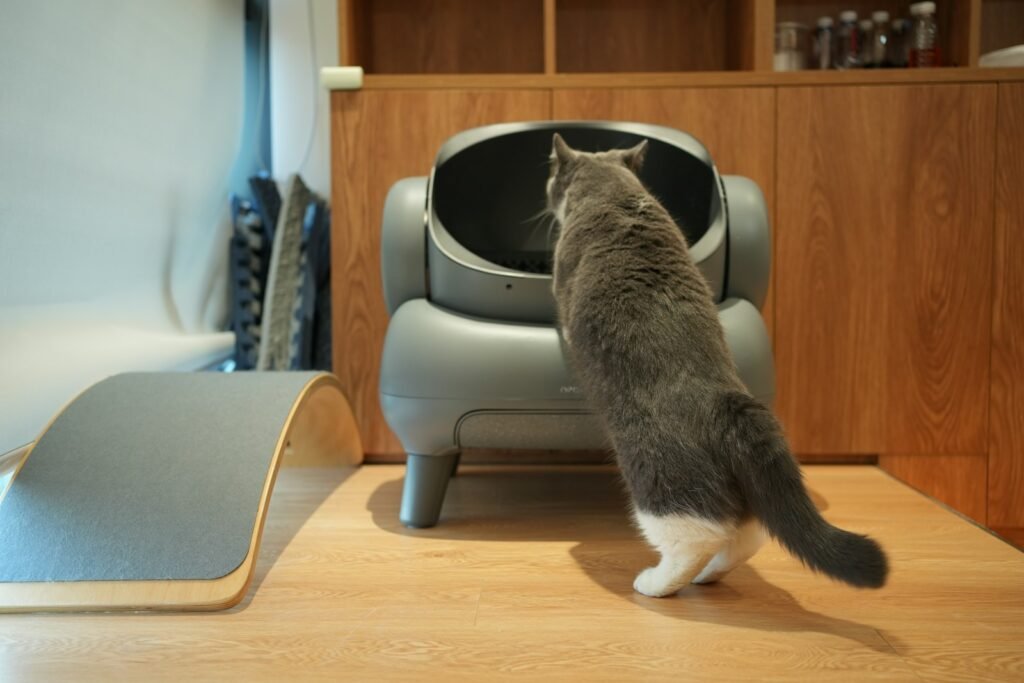Have you ever caught yourself telling a “cat fact” you heard as a kid, only to realize you have no idea if it’s true? You’re definitely not alone! Cats are mysterious creatures, wrapped in centuries of rumor and myth. Some of these tall tales are hilarious, others are surprisingly persistent, and a few could even affect your cat’s health and happiness. It’s time to set the record straight. Let’s unravel the most common myths about our feline friends—and you might just be shocked by what you find out!
Cats Always Land on Their Feet

This saying has been passed down through generations, and while it sounds magical, it’s only partly true. Cats do have an impressive “righting reflex,” which helps them twist their bodies midair to land on their feet most of the time. However, this doesn’t make them invincible. If a cat falls from a great height or doesn’t have time to adjust its position, injuries can and do happen. Broken bones and sprains are real risks for cats who fall from windows or balconies. So, while they’re graceful, they’re not superheroes—keep those screens secure!
Cats Hate Water

It’s a common sight: a cat spots a bathtub, and suddenly, it’s in the next room. But not every cat despises water. In fact, some breeds, like the Maine Coon and Turkish Van, are known for their love of swimming and playing in the water. Even ordinary house cats can grow accustomed to water if introduced gently and positively. The truth is, many cats avoid water because their fur takes a long time to dry and gets heavy, not because of some universal feline aversion.
Cats Are Aloof and Don’t Love Their Owners

Many people still believe that cats are cold and distant creatures who only tolerate humans for food. But anyone who’s had a cat curl up in their lap, purr with contentment, or follow them from room to room knows this just isn’t true. Cats show affection in subtle ways, like slow blinks, head-butting, or gentle kneading. They may not be as openly demonstrative as dogs, but their loyalty and love are just as real.
Cats Always Purr When They’re Happy

Purring is often thought of as a feline’s way of saying “I’m happy.” While cats do purr when they’re content, they also purr when they’re scared, in pain, or even dying. Purring can be a self-soothing mechanism, a way to communicate with their humans, or a request for help. If your cat is purring in an unusual context, pay attention to other signs—they might be asking for comfort, not just showing joy.
Cats Can See in Complete Darkness

Cat eyes are mesmerizing, especially in low light, and they do have exceptional night vision compared to humans. But contrary to popular belief, cats can’t see in total darkness. They need at least a small amount of light to see. Their eyes are designed to make the most of dim lighting, which helps them hunt at dawn or dusk, but in total darkness, they’re just as blind as the rest of us.
Cats Have Nine Lives

This classic saying probably comes from how cats seem to escape dangerous situations again and again, but the truth is, cats only get one life—just like everyone else. While they are agile and quick-thinking, they’re not immune to accidents or illnesses. Believing cats are nearly indestructible can lead to risky situations, so always keep your furry friend’s safety in mind.
Milk Is Good for Cats

The image of a cat lapping up a bowl of milk is ingrained in popular culture, but most adult cats are actually lactose intolerant. This means they can’t properly digest the lactose found in cow’s milk, which can lead to stomach upset, diarrhea, and other digestive issues. Kittens can handle milk while nursing, but after weaning, water is the best drink for your cat.
All Cats Hate Dogs

The phrase “fighting like cats and dogs” has convinced many people that these two species are natural enemies. In reality, cats and dogs can become best friends or, at the very least, tolerate each other peacefully. Much depends on their personalities, early socialization, and how introductions are handled. Patience, supervision, and gradual exposure can lead to a harmonious household.
Cats Only Meow to Communicate With Other Cats

It turns out that adult cats rarely meow at each other. Meowing is a behavior cats mainly use to communicate with humans. Each meow can mean something different: food, attention, or even just a greeting. If you listen closely, you’ll notice your cat has different meows for different situations and even for different people.
Indoor Cats Can’t Get Sick

Many believe that if a cat stays inside, it’s protected from all diseases. While indoor cats are less exposed to some dangers, they can still get sick from viruses, bacteria, or parasites brought in on shoes, clothes, or other pets. They’re also at risk for obesity and boredom-related issues. Regular vet check-ups and vaccinations are just as important for indoor cats as for those who roam outside.
Cats Don’t Need to Be Trained

There’s a myth that only dogs need training, but cats can learn, too! In fact, many cats enjoy the mental stimulation that comes with learning tricks or using puzzle toys. Training can help with unwanted behaviors like scratching furniture or jumping on counters. Plus, teaching your cat simple commands builds a stronger bond and makes life easier for both of you.
Cats Are Nocturnal Animals

It’s easy to think your cat is a night owl when they zoom around at midnight, but cats are actually crepuscular. This means they are most active at dawn and dusk. Their activity patterns are shaped by their wild ancestors, who hunted during these times to avoid predators. While some cats do adjust their routines to match their humans, don’t be surprised if your cat wakes you up before sunrise!
Declawing Is a Simple, Harmless Procedure

Some still believe that declawing is just like trimming nails, but it’s actually a painful surgical procedure that removes part of the cat’s toes. Declawing can lead to long-term pain, behavioral problems, and difficulty walking. Many countries have banned it, and there are humane alternatives, like scratching posts and nail caps, to protect your furniture.
Cats Will Always Use the Litter Box

While most cats take to the litter box naturally, it’s not always guaranteed. Stress, illness, or dirty litter boxes can lead to accidents. Some cats prefer certain types of litter or locations. If your cat starts avoiding the box, it’s important to figure out why—this behavior is usually a sign that something needs your attention.
Cats Don’t Need to See the Vet Unless They’re Sick

Because cats often hide their pain or illness, some owners only take them to the vet when something is obviously wrong. But regular check-ups are crucial for catching issues early. Cats are experts at masking discomfort, so preventive care—including dental checks and vaccinations—can keep them healthier, longer.
Cats Can Eat Dog Food

It might seem convenient to feed your cat and dog the same food, but cats have very different nutritional needs. Cats require certain nutrients, like taurine, which are not found in dog food. Feeding your cat dog food can lead to serious health problems over time. Always provide food made specifically for cats.
Cats Are Low-Maintenance Pets

There’s a widespread belief that cats are easy pets that can basically take care of themselves. While cats are more independent than some animals, they still need daily care, playtime, attention, and regular vet visits. Neglecting their needs can lead to boredom, obesity, or behavioral problems. Cats thrive when treated as valued members of the family.
Black Cats Bring Bad Luck

This superstition has been around for centuries, but there’s absolutely no truth to it. In some cultures, black cats are actually symbols of good luck! Sadly, belief in this myth can make it harder for black cats to find loving homes. Every cat, no matter its color, deserves kindness and a chance at happiness.

Linnea is a born and bred Swede but spends as much time as possible in Cape Town, South Africa. This is mainly due to Cape Town’s extraordinary scenery, wildlife, and atmosphere (in other words, because Cape Town is heaven on earth.) That being said, Sweden’s majestic forests forever hold a special place in her heart. Linnea spends as much time as she can close to the ocean collecting sea shells or in the park admiring puppies.






